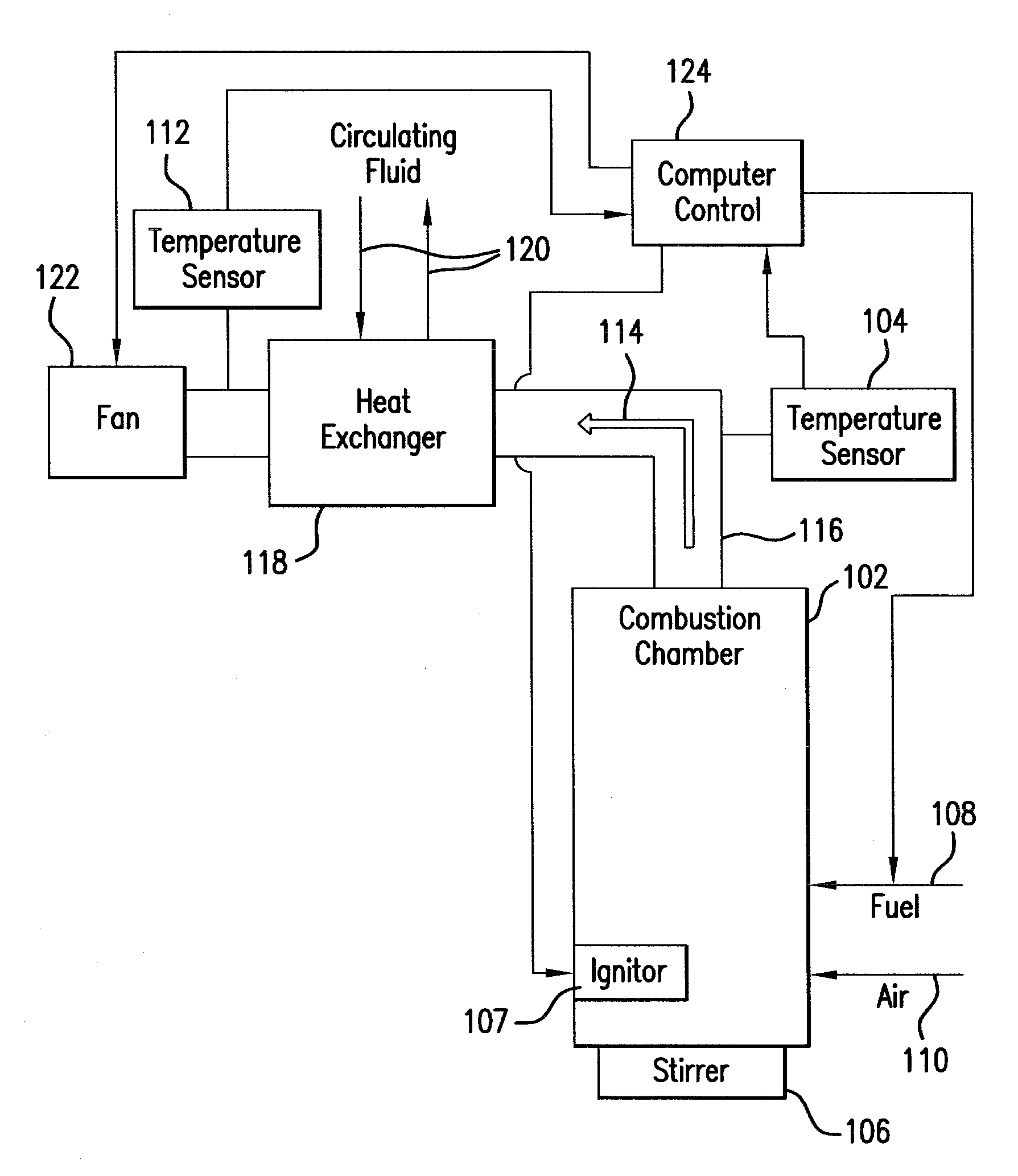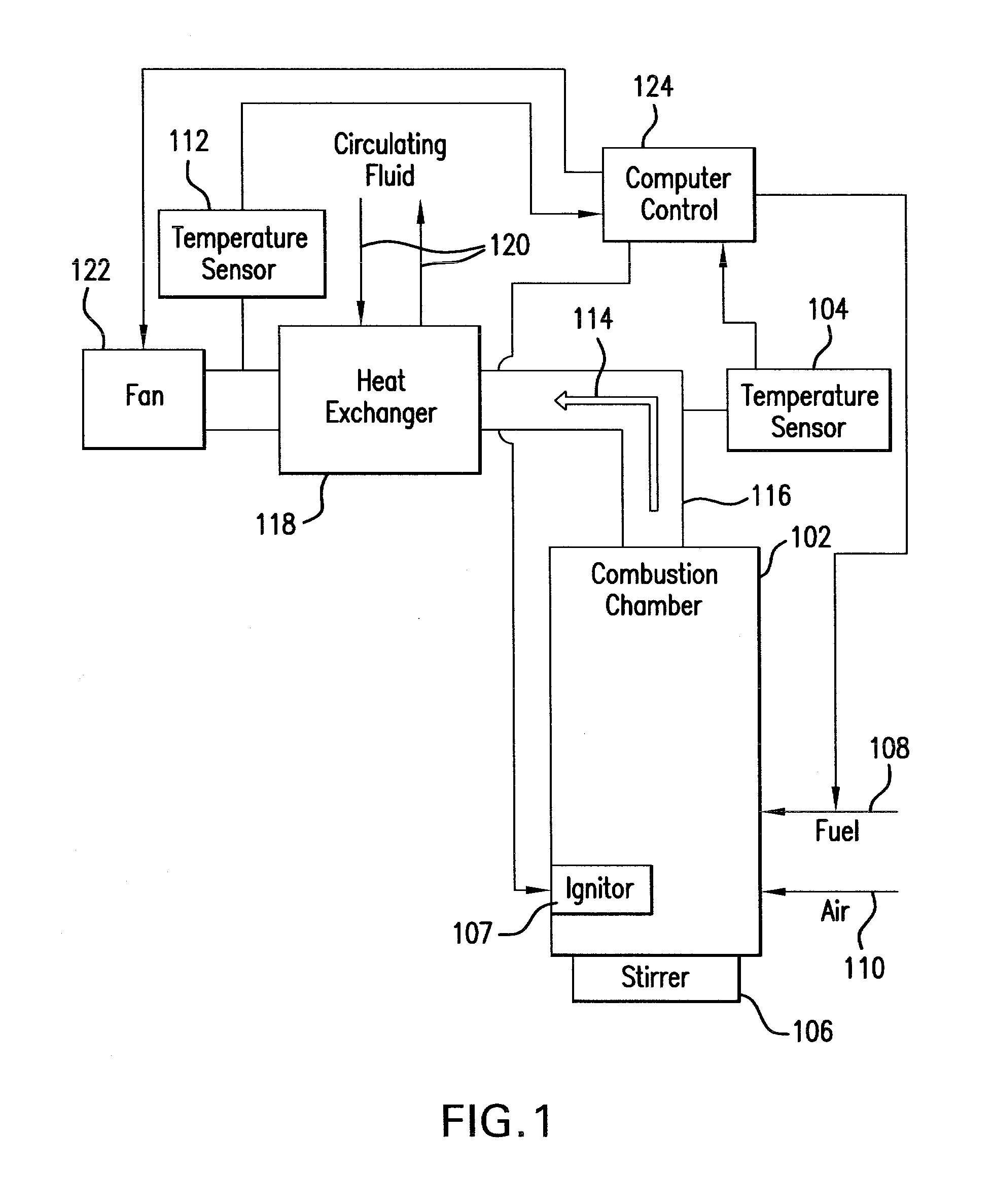Non-catalytic biomass fuel burner and method
a biomass burner and non-catalytic technology, applied in the field of biomass burners, can solve the problems of reducing the expected lifetime of catalytic stoves to two years, requiring replacement plates for hundreds of dollars to purchase today, and being difficult to maintain catalytic stoves
- Summary
- Abstract
- Description
- Claims
- Application Information
AI Technical Summary
Benefits of technology
Problems solved by technology
Method used
Image
Examples
Embodiment Construction
[0031]The detailed description set forth below in connection with the appended drawings is intended as a description of various embodiments of the invention and is not intended to represent the only embodiments of the invention or the only manner in which the invention may be practiced. The detailed description includes some specific details for the purpose of providing an understanding of the invention. However, it will be apparent to those skilled in the art that these details may be provided as merely illustrative examples and / or optional features of the present invention. Some well-known structures and components may also be depicted in block diagram form to avoid obscuring concepts of the present invention.
[0032]The present invention relates generally to a non-catalytic multi-fuel burner (or stove) having improved efficiencies and methods of operation. Heat energy is created by burning either traditional or non-traditional biofuels inside a combustion chamber of the burner. Tra...
PUM
 Login to View More
Login to View More Abstract
Description
Claims
Application Information
 Login to View More
Login to View More - R&D
- Intellectual Property
- Life Sciences
- Materials
- Tech Scout
- Unparalleled Data Quality
- Higher Quality Content
- 60% Fewer Hallucinations
Browse by: Latest US Patents, China's latest patents, Technical Efficacy Thesaurus, Application Domain, Technology Topic, Popular Technical Reports.
© 2025 PatSnap. All rights reserved.Legal|Privacy policy|Modern Slavery Act Transparency Statement|Sitemap|About US| Contact US: help@patsnap.com



